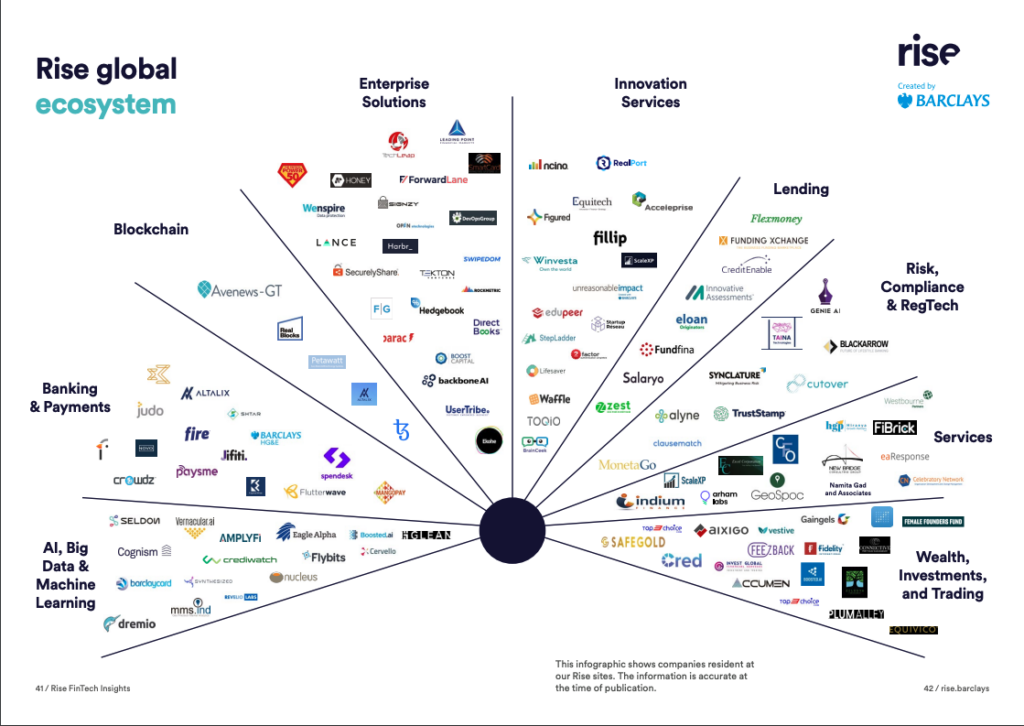The growth of Embedded Finance reflects the predictions of FinTech investor Eileen Burbidge, who anticipates that innovation and digital strategy will become integral to an organization’s core business strategy and that FinTechs will shift from B2C to B2B models.
Key to the success of Embedded Finance will be the use of technology, such as APIs and the cloud, which allow for the reformation and co-development of financial services with third-party companies. If the financial industry and FinTech community can embrace this opportunity and be open to partnerships and innovation, the result will be a win-win-win situation for incumbents, startups, and consumers.
In this report, Barclays will explore how various market sectors, FinTechs, and the banking industry are responding to the opportunities presented by Embedded Finance.
Embedded Finance is a revolutionary approach to the financial services industry that involves integrating financial services into various sectors, such as retail, healthcare, education, transportation, and agriculture.
This integration enables the creation of new customer journeys that solve real-world problems for consumers. What makes embedded finance exciting from a FinTech perspective is not only the possibility of developing creative solutions to these problems, but also the availability of new, modular technology in the form of Banking as a Service (BaaS) that underlies and supports those solutions.
The growth of embedded finance is a reliable indicator that the predictions made at the New Frontiers conference, an annual technology event hosted by Barclays, are playing out. One prediction was that innovation and digital strategy would no longer be separated from an organization’s core business strategy, reflecting the growing importance of innovation in our evolving digital world. Another prediction was that FinTechs would increasingly shift from a business-to-consumer (B2C) model to a business-to-business (B2B) model, as smaller financial services companies emerge as agents of change, injecting innovation into traditional banking technology.
The growth of embedded finance is transforming the financial services industry, shaped by the combined forces of disruptive technology, new customer journeys, and banks’ abilities to add value. Together, these factors will shape how brands are experienced by customers and clients in many sectors, with an estimated value in the US alone of $3.6 trillion in ten years’ time.
In payments alone, Embedded Finance 2020 revenues were $16.1 billion, but by 2025 they’re forecast to reach $140.8 bn
- Barclays -
FinTech’s role in Embedded Finance
Technology plays a crucial role in the growth of Embedded Finance, as it allows for the reformation, offering, and co-development of core financial services through APIs and the cloud with third-party companies.
This allows for the predicted shift from B2C to B2B models for FinTechs and opens the door to a new era of rapid evolution in the industry. It is important for companies to be prepared for these changes and to embrace the opportunities and partnerships that come with them in order to take advantage of the benefits for the FinTech ecosystem, the financial services industry, and global clients.
Banking as a Service (BaaS) is a technology that enables brands to offer financial services to their customers, such as payments and lending, by integrating with a partner bank’s infrastructure. BaaS platforms are also evolving to offer a range of value-add services, such as account aggregation, KYC, payroll, and brokerage, through the use of “app stores.”
These platforms allow brands to easily adopt the latest financial technology infrastructure pre-approved by their partner bank. The FinTech industry has made significant progress in building the API stack for financial services over the past few years, and these services have been integrated into various brands after being approved by regional banks.
As consumer-facing FinTech continues to grow and reach scale, new areas of demand will likely emerge, such as the ability to easily move direct deposit accounts between payroll providers.

The role of Rise FinTech Insights in Embedded Finance
Cloud computing and APIs are important technology that are central to BaaS. This technology allows for on-demand, highly elastic, and configurable capabilities, which has lowered the barriers to entry for new players in various industries, including financial services. FinTechs, Big Tech companies, neobanks, and traditional banks have all leveraged the potential of the cloud to innovate and offer new B2B and B2C services at a lower cost. In the payments industry, companies like Adyen and Stripe have built their platforms with the cloud at their core. Traditional banks also rely on the cloud and may be able to use this strength to more easily integrate payments and other financial features into third-party web-based products. Big tech firms are also interested in incorporating embedded finance into their offerings. For example, Barclays recently partnered with a smartphone provider to offer financing options to customers. The use of cloud technology and APIs (Application Programming Interfaces) is key to enabling embedded finance, as they allow financial institutions to extend their reach into new digital journeys and provide seamless experiences for users. Regulators are beginning to recognize the importance of the cloud and are working with financial institutions to understand the associated risks and ensure that customers continue to receive high-quality services in an evolving tech landscape. In the future, it is possible that regulations will be developed to support embedded finance, potentially in collaboration with innovators of all sizes to enable new services to come to market smoothly and quickly.For full Barclays report see: https://rise.barclays/content/dam/thinkrise-com/documents/Rise-FinTech-Insights-Embedded-Finance-DIGITAL.pdf

